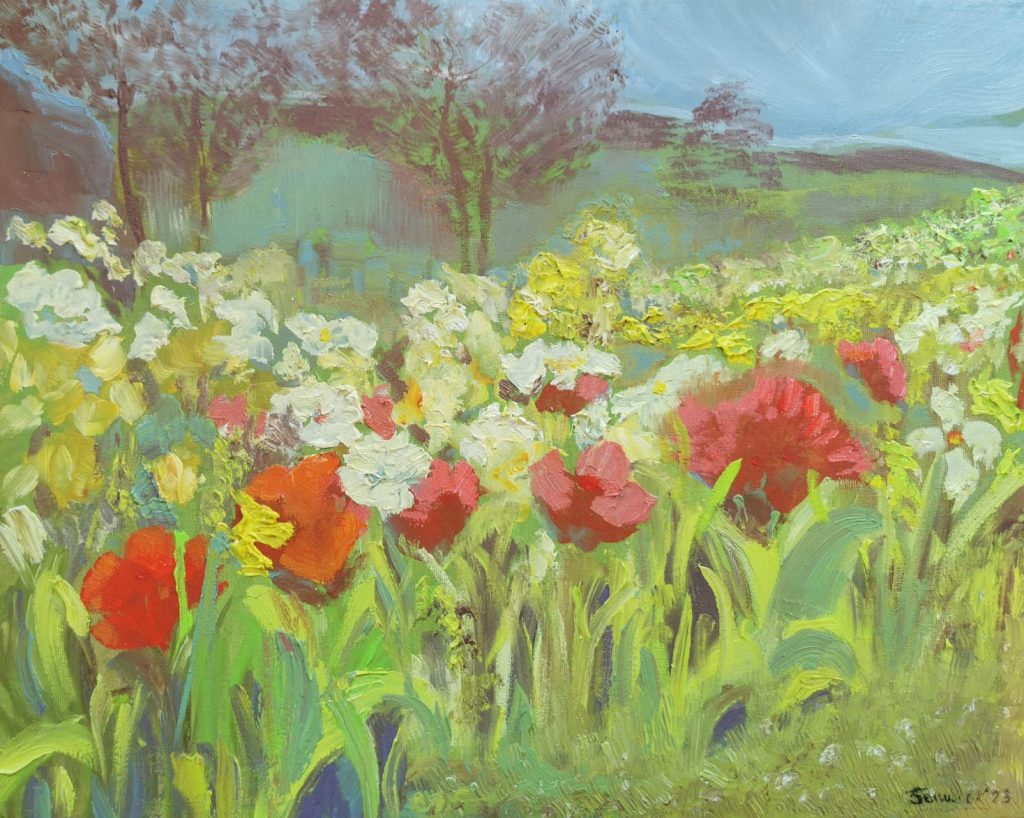Spring on the River Diemel

The mediaeval village of Warburg crowns a steep hill in the heart of Germany.
Two imposing Catholic churches rule over the landscape. Their subjects – cobblestone squares and red-roofed houses – spread down the slope to meet the River Diemel. Church bells sound through the day. Sometimes a faint clanging to mark the quarter hour, other times a full-throated chorus to wake the faithful at 9 am on Sunday mornings.
Before reaching the river, walk through the tree-lined Altstadt square, where the hill levels off. Shallow cracks and rounded grooves in the rectangular cobbles massage underfoot. The bakery door is half open, releasing the aroma of sugar-powdered cakes and yeasty bread dough to tempt you inside.
To see the swans on the river, follow the gentle decline of Lange Strasse as it branches off the old town square. Pass brick houses and ivy-blanketed homes timbered with dark brown beams. They’re strong and slightly crooked, as if just sawed from oak trees.
At the end of Lange Strasse, a bridge arcs over the river. It was built during a major reconstruction of the riverbanks after years of biblical flooding. Historically, the river could surge as much as a kilometre to the top of the road. Gushing in torrents through the street, cascading into basements, it forced residents to evacuate.
Look to your left. In the yard of one of the houses is an old wooden rowing boat raised on an iron structure. Its white bow peeks out from under a plastic tarpaulin as if scenting the air for a flood.
The road curves to the left, leading to the bridge where the burble of water grows louder. Turn left down a narrow lane running parallel to the river. The tarmacked trail is a faded grey ribbon losing ground to the grass blurring its edges. Under the thin track, the earth feels closer to your feet, magnetising them, pulling you gradually closer to the riverbank.
In the 1970s, the river here was much wider, and a whirlpool swirled where the bridge is today. Back then, a little boy had walked to the riverside, a local might tell visitors after a few beers.
It could have been a spring like this one, with a chill wind scouring the cold blue sky. Was the little boy wearing a cap, mittens, and a red coat against the bitter gusts?
The storm might have invigorated the air with the smell of coppery soil and green scents from raindrop-beaten leaves and grasses. Perhaps, like today, a family of four elegant birds floated on the water, their necks curved like ballerinas. Two adults and two cygnets, their brilliant white feathers shining against the muddy water stirred up by a storm earlier in the day.
Near the swollen riverbank, crouched on the ground to see the swans better, curiosity might have glowed in the boy’s eyes.
Every spring since those long-gone days, yellow, white, and red tulips unfurl their petals near the spot where he’d watched, enraptured.
Listen to a conversation about Spring on the River Diemel
‘Deep Dive’ conversation by Notebook LM based on critical analysis of ‘Spring on the River Diemel’.

Spring on the River Diemel by Sarah Fenwick
€600 Details